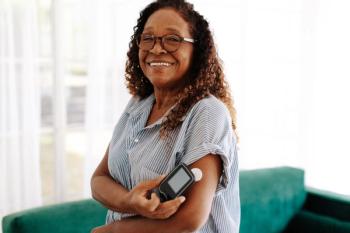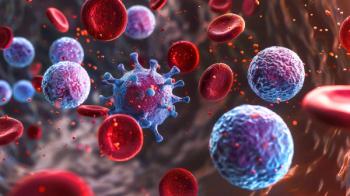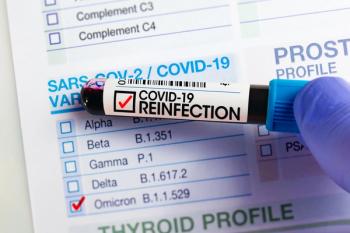
How to Bring Greater Workforce Diversity to Oncology Pharmacy
Andre Harvin, PharmD, MS, executive director of Pharmacy, Oncology Services at Cone Health, discusses methods of accomplishing greater workforce diversity in the field of oncology pharmacy.
Pharmacy Times interviewed Andre Harvin, PharmD, MS, executive director of Pharmacy, Oncology Services at Cone Health, on an ATOPP session he will be moderating that addresses ways of developing greater workforce diversity in cancer care.
Question:At the ATOPP summit, you will be moderating a session on developing greater workforce diversity in cancer care. What are your views on methods of accomplishing greater workforce diversity in the field?
Andre Harvin: Yeah, so well, my hope is that our panel will help us answer this question more so than anything else. But from my perspective, it really starts from a much younger age than when you're already a pharmacist and you're deciding what to do. We know that there's compelling data that shows that if patients don't see themselves, which means that their providers don't reflect them in their community, then there are poor outcomes associated with that. We see that especially in aspects like breast cancer, that there is a very distinct divide in terms of outcomes with Black women compared to their non-African American counterparts, and why is that? A lot of times, it's just, there's not that familiarity. There's not that overall trust that's there, and we have to find ways to bridge that gap.
We know, and I can say, I can attest myself, a lot of times, I'm the only person that looks like me in the room when we're talking about aspects within oncology or oncology pharmacy specifically, and that's not something I want to occur. I want our entire population to be represented in those conversations. We need to make sure that our pipeline of pharmacists that are coming out, starting to fill those needs throughout the country of where do we see these populations of African Americans, Hispanic Americans, or Asian Americans that need greater representation, that need to be brought to the table, and make sure that we have a compelling workforce that reflects that. So it's something that's going to take us time.
I think what we're going to see right now is that the data shows us that really within pharmacy as a profession, and then specifically oncology pharmacy, the diversity is lacking. And that's okay, as long as we can acknowledge it as a profession and as a subspecialty within that profession, and then ask questions like we're asking now, ‘Well, how do we improve on that.’
It's going to start at a much earlier phase, we have to make sure that we're touching these children at the high school and middle school level and making sure they have interest in pharmacy is profession making sure they understand that oncology is a subspecialty that they can go into that can be really successful for them, and that needs them at the table to help represent that population that they can serve one day.
Question:What are some challenges you see ahead when working towards the goal of creating greater workforce diversity?
Andre Harvin: There's a lot of challenges when it comes to creating greater workforce diversity. One of the more pivotal ones is really getting people to understand that it's a problem. When we talk about things like diversity, equity, and inclusion, we would be ignorant if we said that there was not ingrained pushback against that within our country, and we have seen that play out over the last several years. They sometimes say that's part of woke culture like it's a negative, and really, what I tell people is like, let's get away from the emotional aspect of talking about diversity, equity, and inclusion, and just look at the data. The data really show that when it comes to disease burden, health outcomes, access—there are very clear lines that occur between African Americans, Hispanic Americans, Native Americans, and some of their White counterparts. There are just inefficiencies. There are failures there at a systemic level.
We are here as caregivers, right? We got into this profession as pharmacists, as physicians, nurses, whatever have you, because we wanted to help people. None of us got into it because we wanted to just help Black people or White people or Hispanic people or Native American people—we just wanted to help people, and we have to recognize that to a degree we fail some of those subsections of our American population.
So probably one of the biggest challenges is being able to recognize our failures and accept our failures, and then say, how do we move forward as a profession and as an industry in health care to help reduce some of those failures and reduce some of those gaps that exist in care today, and that takes all of us. It's not just saying that what would need to occur is we need more Black pharmacists that are interested in oncology, we do need that. But we also need the support of our White counterparts and our Asian American counterparts to support us and help uplift us and introduce us to those opportunities when they see fit. So we all have to come together as a profession as experts to say that we want to be inclusive as a profession, that we want to be inclusive in terms of those of us who help lift this disease burden that is oncology, and that it's important to all of us.
Probably number 2, the biggest thing is we all need resources. So right now, as we've got issues within the economy, there's a lot have worries around recession, people are worried about how they're going to fill their tanks up with gas, saying, ‘Hey, we have to focus on putting effort and FTE and capital dollars towards building more diversity and a more equitable society.’ Again, some people are going to initially push back on that. But again, the data show that when we embrace things like diversity, equity, and inclusion, it makes us better, and helps us bring new resources to the table that help us bring new ideas and solutions to the table that we couldn't if we only play in a very small box.
So, not only is it critical when we look across the country that we have to bridge these divides, but it's critical when we look at the disease that is cancer that we are better together. That's what this is about. It's like how do we ensure that the people that we care for they can see themselves and the people that care for them?
Question:What could be the impact of bringing greater workforce diversity into cancer care in terms of patient care and outcomes?
Andre Harvin: The impact of diversity, I think, is going to be very clear. I know one of the biggest aspects that we talk a lot about is not necessarily what we're going to focus on a lot in this forum, but I feel like the conversations are going to go there, especially before and afterwards, is when we think about clinical trials. Clinical trials are a huge area, it's a huge opportunity, but we continue to see the disparities there, when we look at well, in what population was a new drug, or this new therapy, tested.
Right now, we just don't get a lot of participation from African Americans, Hispanic Americans, and Native Americans in these clinical trials, which means that if there are differences, if there are reasons that an African American should receive different doses, or they need to be adjusted, which is going to be different from their Caucasian counterpart, we're not going to know that because we're not getting enough of that diversity at that clinical phase trial. So the hope is that we find opportunities to really get past the mistrust that certain demographics have with public health care, and we have to understand that that's there for a reason, because there's history around that, there's reasons for certain populations not necessarily trusting when it comes to like clinical studies or drugs that have been FDA approved. So we have to find ways to bridge those gaps.
I think what's going to be most important, though, is when we look at the outcomes. I constantly look to it is that when we looked at breast cancer survival rates, and the impact that breast cancer has within populations in the United States. African American women are at the very rear of every single measure you can look at. They're more likely to become food insecure, they're more likely to become shelter insecure, they're more likely to have worse outcomes and more likely to deal with additional comorbidities during their cancer care, and there really isn't a reason for it. The reason is because we have unconscious biases that find their ways into clinical decisions. There is an overall, again, mistrust that sometimes still occurs, but we can combat that. So, my hope is that we really focus on some of those areas where we know we can bridge those divides, we know we need to get more diversity in clinical trials, we also know that we have very specific disease states where we have drugs that can improve patient's outcomes, we have to make sure that they're being prescribed to them accurately, and that they have the same access to those drugs that they're maybe not African American counterparts have. So there's a lot of downstream outcomes that can occur.
I'm very hopeful that when we look at breast cancer 5 to 10 years from now, we start to see an erosion of those differences between Black women and White women. But that's going to take all of us coming together and all of us focusing in recognizing that it's a problem.
Question:Any closing thoughts?
Andre Harvin: So what I'm hoping that everyone comes away from this session, when we talk about building a more diverse and equitable workforce, is that we are all so much stronger when we come together. The really great thing that I love about not only ATOPP, not only the profession of pharmacy, and that subspecialty that is oncology, is that it is a small world. I mean, we know each other when we go to these meetings, we've seen one another before. We’ve spoken to them in different conferences, we put messages on ad boards to ask them like, ‘Hey, where are you doing in this situation? What are you doing in that situation?’
When we all come together, I think we can certainly recognize that we still have areas of improvement, and we can rely on the data to show us where we need to improve, and that's what we hope comes out of this session is that there is a lot of emotion around it. There is sometimes it's going to make us feel and potentially squirm in our seats to hear that as a profession, we still have a problem, we have divisions when it comes into race and gender that we need to work on. But the great thing is that, again, we all know each other, we all know why we're here, and why we came into this profession and the subspecialty. Because we want to end the burden of cancer.
When we say that we have to do that, across the board, we never came in as to say we want to end the burden cancer in these specific patients, or patients that look like me or don't look like me, we want to end the burden of cancer really across the world. I believe this group can do that, by helping understand that we do that by ensuring that we have an inclusive workforce. That's going to take time, it's going to take commitment, it's not something that we fix in the next couple of years. It's something that we have to fix over the next 5, 10, 15, 20 years is that we have to continue finding opportunities to help ensure that we have a diverse workforce. So my hope is that this is step one, which is having that conversation, articulating and recognizing the issue, but also understanding that the person next to us is not the problem. They're going to be who we look to in terms of solutions. So I hope that everyone looks at themselves in the mirror after they leave and say, ‘What is my role in helping build a more diverse workforce?’ If we can do that, then we have succeeded.
Newsletter
Stay informed on drug updates, treatment guidelines, and pharmacy practice trends—subscribe to Pharmacy Times for weekly clinical insights.


















































































































































































































